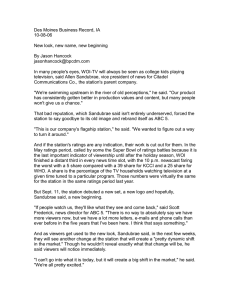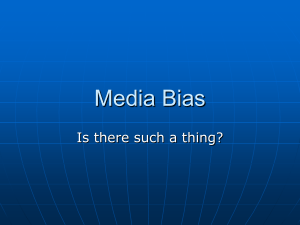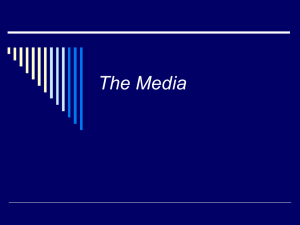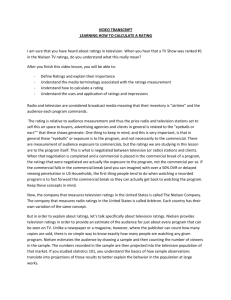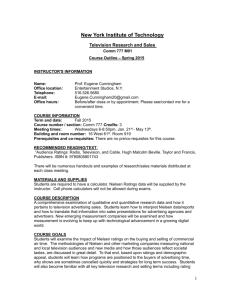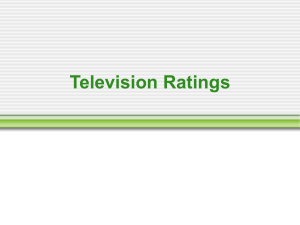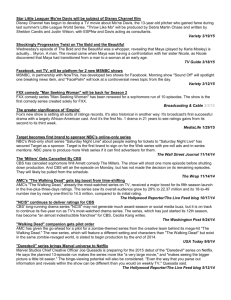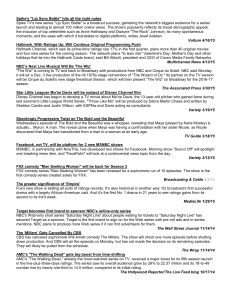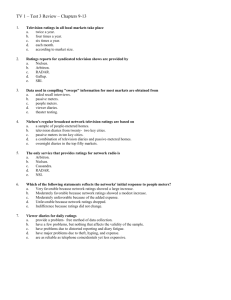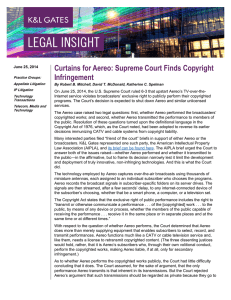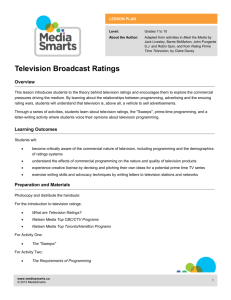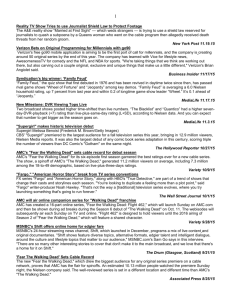Chapter 8
advertisement
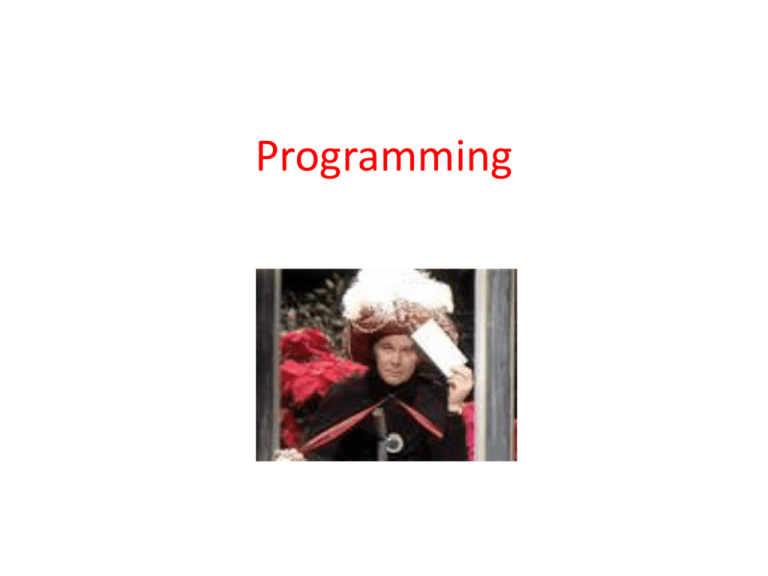
Programming A concise history of television programming The most important activity is the selling of audiences to advertisers. Viewers and rating points are commodities to be sold; “selling eyeballs.” TV By The Numbers - Scheduling, Ratings "Big Bang Theory“ The Art and Science of Scheduling Prime time – largest audiences. TV programmers are concerned with “audience flow,” the movement of viewers from one program to another. Remote controls, VCRs and DVRs make managing audience flow, measuring viewership more difficult. Remote control DVRs TV programming strategies (examples?) Strip programming – everyday, same time. Block programming – similar programs scheduled one after the other. Strong lead-in – audience carries over to a newer or weaker show. Strong lead-in (article) Current network TV schedule: 2013-14 TV schedule New technologies Online video, other new technologies both an opportunity & a threat to traditional TV. Hulu - new directions Aereo demo (Broadcast TV wants to receive compensation for stations on Aereo) Aereo streaming broadcast TV - PBS Programming must be repeatable (exceptions?) Cost of producing programs makes “reruns” necessary. Audiences will watch programs over and over. Radio depends on listeners enjoying their favorite songs over and over. For TV, some formats “repeat” better than others. Reality programs and dramas don’t do well in reruns, but sitcoms do. Why? General theories Least objectionable program – rather than turn off the TV, viewers will watch LOP. Appointment television – viewers seek the most popular programs, whenever they’re scheduled. How much longer? Why so many reality programs? Reality programs popular with programmers because they can be created quickly and inexpensively. Costs less than $500,000/hour; about one-third cost of comedy or drama. Syndicated Programming Programs (TV or radio) that are sold to individual stations in many markets. First-run syndication (“Ellen”). Off-network syndication (“Friends”). Children’s Television Issues Concern over influence of TV led to Vchip in 1996. V-chip promo Sesame Street v-chip TV Ratings TV-Y, TV-Y7, TV-G, TV-PG, TV-14, TV-MA. TV content ratings Apply to all entertainment programs. Parents may block all programs of a certain rating (example, TV-MA). Local Programming – Television Local TV programming mostly takes the form of news. Provides valuable public service, but is also profitable. As much as 50% of sales revenue. Local cable Public-access channels let almost anyone be on TV (“Wayne’s World”) Wayne's World (pause after 1:00) Cable access Local news inserts in CNN Headline News are common; a few local allnews channels. Local video is available via YouTube: ManeMedia YouTube Radio Most common formats: Religious (most on AM); Country; Adult Contemporary; Oldies/Classic Rock; News/Talk. Dayparts (radio) – morning drive, afternoon drive are most important. Much less local than it used to be; less local ownership of stations. A DJ in a remote location can “voice track” an hour show in a few minutes; “turnkey” satellite services. Stations use strict playlists of songs. http://www.playlistresearch.com/dallasradio.htm DFW Arbitron ratings: DFW ratings HD radio gives local radio new technology for 21st century. HD radio Apps make radio available on cell phones. I Heart Radio app Ramsey - content is king Pandora, et al; satellite radio: new competition for AM-FM local radio. Pandora


